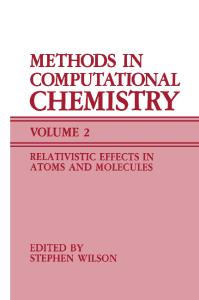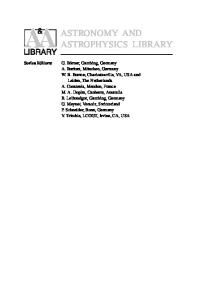Practical Aspects of Computational Chemistry Methods, Concepts and A
"Practical Aspects of Computational Chemistry" presents contributions on a range of aspects of Computational Chemistry applied to a variety of research fields. The chapters focus on recent theoretical developments which have been used to investigate
- PDF / 10,072,774 Bytes
- 467 Pages / 439.37 x 666.142 pts Page_size
- 42 Downloads / 361 Views
Jerzy Leszczynski
l
Manoj K. Shukla
Editors
Practical Aspects of Computational Chemistry Methods, Concepts and Applications
Editors Prof. Jerzy Leszczynski Jackson State University Department of Chemistry and Biochemistry 1325 J. R. Lynch St. Jackson MS 39217 USA [email protected]
Dr. Manoj K. Shukla Jackson State University Department of Chemistry and Biochemistry 1325 J. R. Lynch St. Jackson MS 39217 USA [email protected]
ISBN 978-90-481-2686-6 e-ISBN 978-90-481-2687-3 DOI: 10.1007/978-90-481-2687-3 Springer Heidelberg Dordrecht London New York Library of Congress Control Number: 2009926517 # Springer Science+Business Media B.V. 2009 No part of this work may be reproduced, stored in a retrieval system, or transmitted in any form or by any means, electronic, mechanical, photocopying, microfilming, recording or otherwise, without written permission from the Publisher, with the exception of any material supplied specifically for the purpose of being entered and executed on a computer system, for exclusive use by the purchaser of the work. Cover design: WMXDesign GmbH Heidelberg Printed on acid-free paper Springer is part of Springer Science+Business Media (www.springer.com)
Preface
Very few areas of science enjoy such a fast progress as has been witnessed in the last quarter of the 20th century for computational chemistry (CC). An access to increasingly faster and more powerful computers in parallel with continuous developments of more efficient computational programs and methods contributed toward employment of the CC approaches in both basic science as well as commercial applications. As a result, the investigated molecules are larger than ever and can be studied not only in vacuum but also in different solvent environments or in a crystal. Such remarkable progress has not been unnoticed by scientific community. In fact, the chemical and physical societies celebrated the great event of the 1998 Nobel prize in chemistry that was awarded to two leading theoretical chemists/ physicists: Walter Kohn and John A. Pople for their seminal contributions to the development of efficient computational methods for quantum chemistry. Owing to the meticulous and continuous efforts, the computational chemistry methods have become complementary to the costly and time‐consuming experiments and in many cases they provide the only reliable information when experiment is not possible or investigated species exhibit a health hazard to the investigators. The methods and applications of the CC are the topics of the current book entitled ‘‘Practical Aspects of Computational Chemistry: Methods, Concepts, and Applications. Special Issue of Annals–The European Academy of Sciences’’. It was not our goal to collect specialized contributions aimed at a narrow group of experts. Instead, we asked all authors to provide more general reviews, focusing toward general interests of the affiliates of the academy and members of scientific society. Though, it is not possible to cover all topics related to the CC in one volume, we hope tha
Data Loading...











